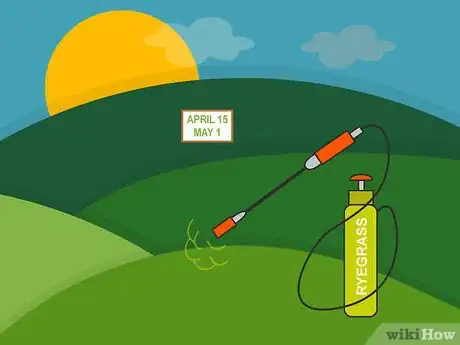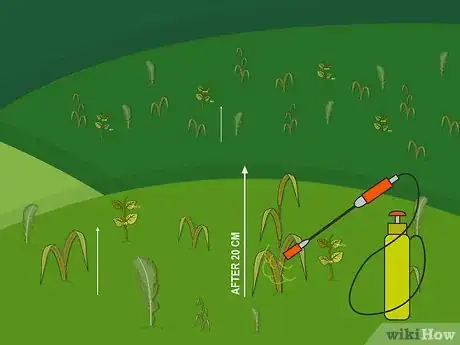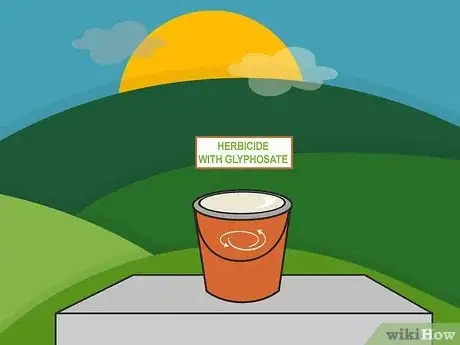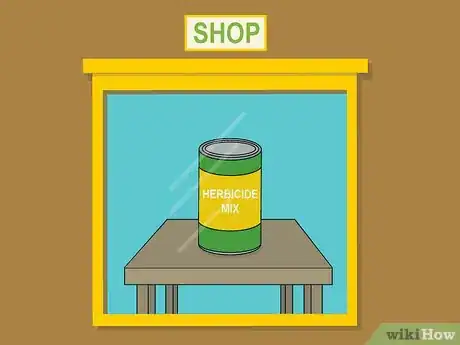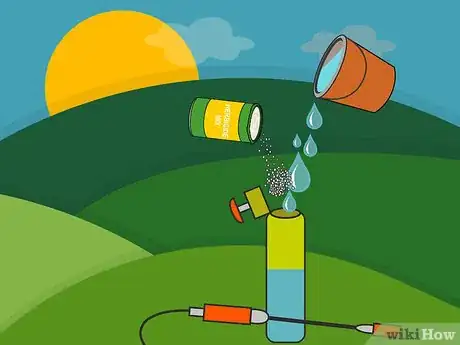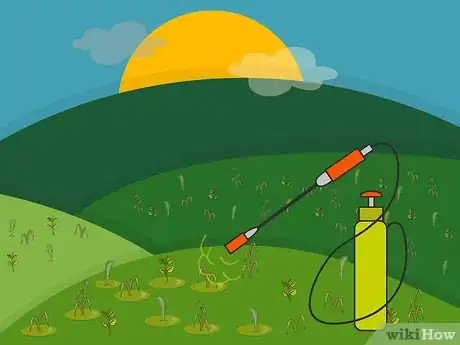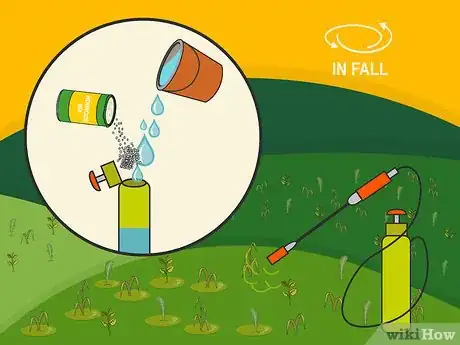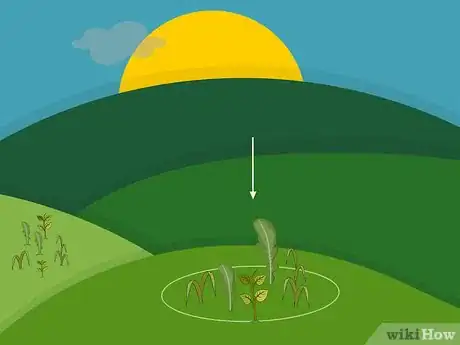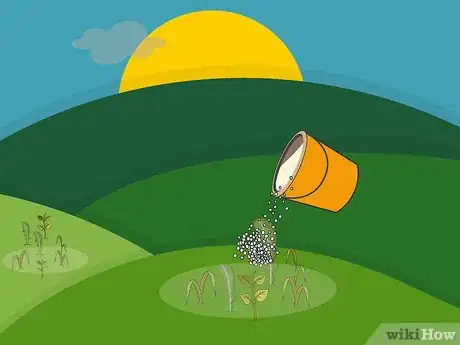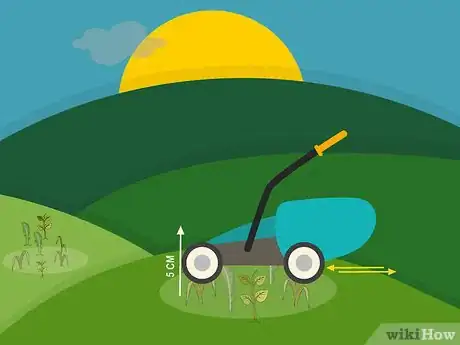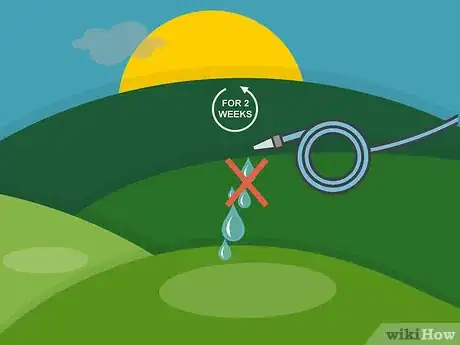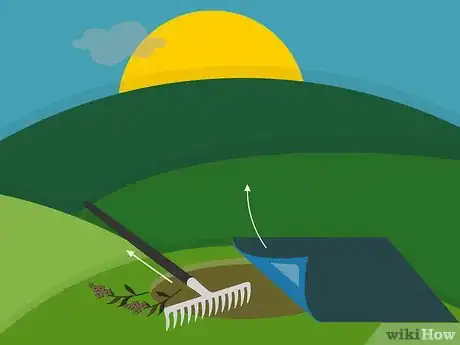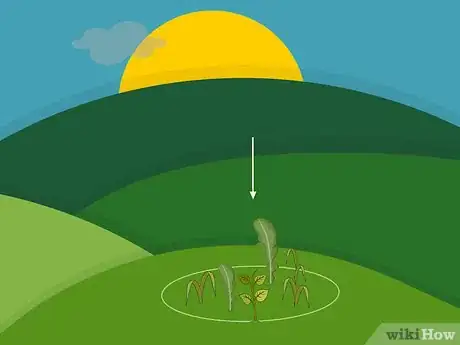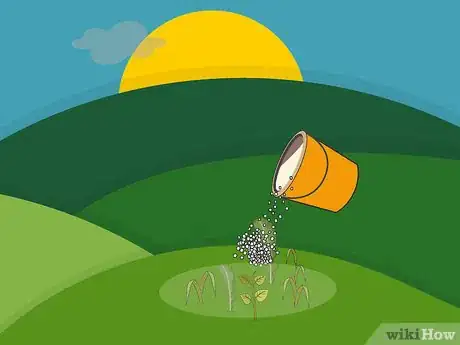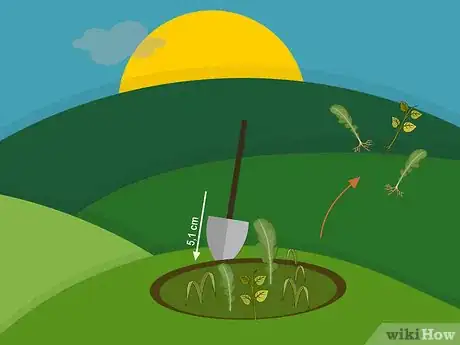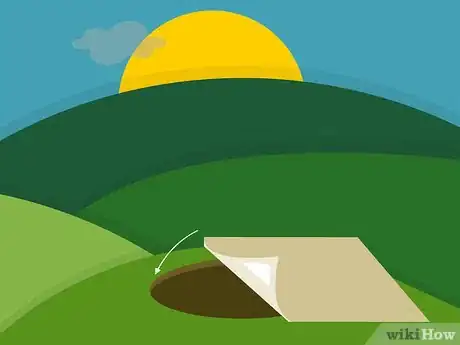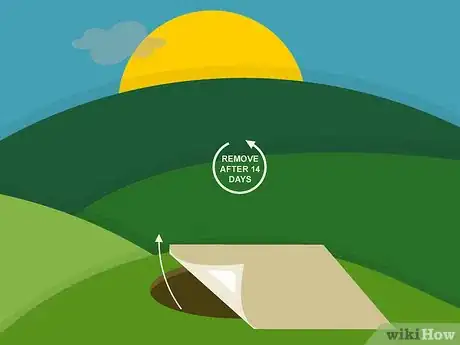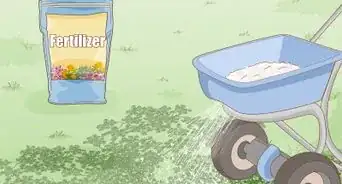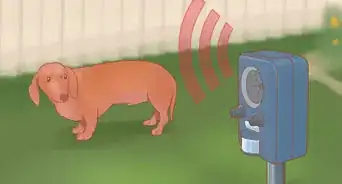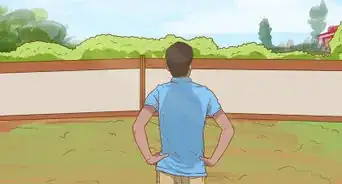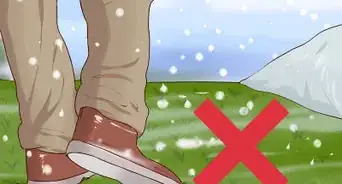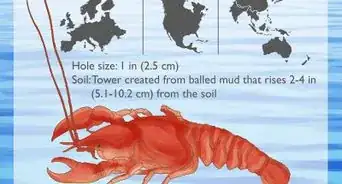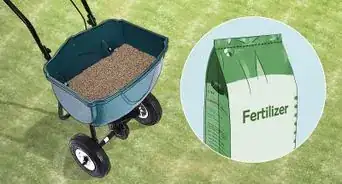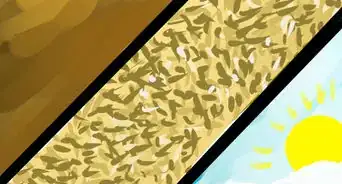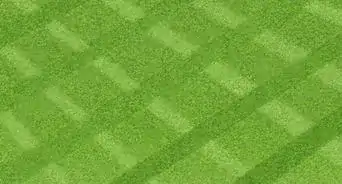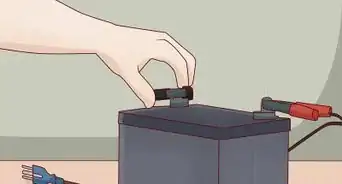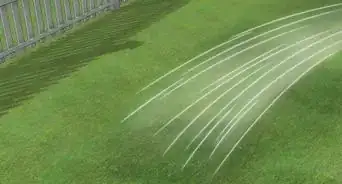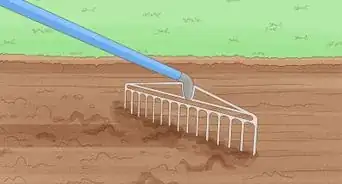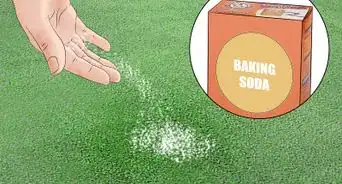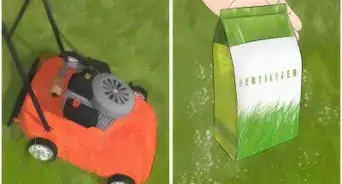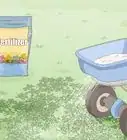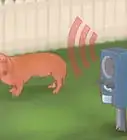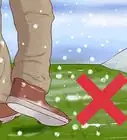This article was co-authored by Lauren Kurtz. Lauren Kurtz is a Naturalist and Horticultural Specialist. Lauren has worked for Aurora, Colorado managing the Water-Wise Garden at Aurora Municipal Center for the Water Conservation Department. She earned a BA in Environmental and Sustainability Studies from Western Michigan University in 2014.
There are 12 references cited in this article, which can be found at the bottom of the page.
This article has been viewed 39,493 times.
Ryegrass has a reputation as a beautiful turf grass and can be seen gleaming in golf courses, athletic fields, and backyard lawns. While it looks great when well-maintained, it can easily dry out during summer. Use herbicides or digging to remove perennial ryegrass, and try mowing or pulling annual ryegrass.This can create unappealing patches of grass that aren't aesthetically pleasing. Using herbicides to kill ryegrass is the most effective option, although some people prefer more natural methods of removal such as mowing and digging.
Steps
Using Herbicides to Kill Ryegrass
-
1Spray your ryegrass between April 15 and May 1. Generally, you'll have ideal temperatures and soil conditions for herbicide application during this time. But ultimately, it hinges on your region.[1]
- In locations like Indiana, it can be difficult to get into fields in early May because of soil saturation. In this case, conduct the application in February or March.
- Daylight temperatures should by a minimum of 55 °F (13 °C), ideally 60 °F (16 °C). Night temperatures should be above 40 °F (4 °C) the 3 days prior to application.
- Soil temperatures should always be above 45 °F (7 °C).
- Herbicides work well for perennial ryegrass.
-
2Apply herbicides before ryegrass grows to 8 inches (20 cm) in height. Spraying them after this time during seedhead emergence will decrease effectiveness. If you want to kill ryegrass that is over 8 inches (20 cm) in height, you'll have to use other methods like mowing and digging.
- However, you shouldn't mow the lawn for 2 to 3 days prior to spraying—it will decrease the amount of spray your ryegrass absorbs.
- There are no herbicides that are effective for ryegrass after seedhead emergence.[2]
Advertisement -
3Use an herbicide that includes glyphosate if you want a prepared mix. Research suggests that you should use at least 1.25 pounds (20.0 oz) ae per acre of glyphosate for killing annual ryegrass. If you're applying herbicides outside of the ideal application window, use 2.25 pounds (36.0 oz) ae per acre of glyphosate.[3] Please note: The WHO considers glyphosate to be a probable human carcinogen. Its use is prohibited in some states and countries. Please check with your local laws and use caution if handling this chemical.
- Labels on herbicide containers often use "a.i." or "a.e" as units of measurement for the herbicide's "active ingredient" or "acid equivalent, respectively.[4]
- A mixture of 1 ounce (0.063 lb) per acre of herbicide with 700 g/kg saflufenacil with 1.25 pounds (20.0 oz) per acre of glyphosate is the most consistently effective way of controlling ryegrass across any application window.
- Adding 2,4-D and dicamba to your mix does not improve efficacy of glyphosate alone. The addition of a PS-II inhibiting herbicide (atrazine and metribuzin) can interfere with glyphosate and stop your herbicide mix from working.
- Effective lyphosate-free herbicide mixes should use paraquat in addition to metribuzin and either 2,4-D or dicamba. However, this combination is only suggested for ryegrass less than 6 inches (15 cm) tall.[5]
- Make sure the herbicide mix is compatible with your herbicide sprayer. If you're purchasing a branded mix, check that it is listed on your sprayer's label or supported by the manufacturer.[6]
-
4Purchase herbicide mix components if you're making your own. These include wettable powders and water dispersible granules, liquid flowables and suspensions, emulsifiable concentrate (ECs) formulations, and surfactants/solutions.
- Wettable powders are solid pesticide formulations dispersed in water. Water dispersible granules are applied after disintegration and dispersal in water and have a longer dispersal time than wettable powders.
- Emulsifiable concentrates are pesticide solutions containing emulsifying agents mixed with a water insoluble organic solvent.
- Surfactants are compounds that decrease tension between two liquids, a gas and a liquid, or a liquid and a solid.
- In order to ensure that you add your products in the right order, follow the WALES acronym, which stands for Wettable powders and water dispersible granules; Agitate; Liquid flowables and suspensions; Emulsifiable concentrate (ECs) formulations; and Surfactants/solutions.[7]
- Glyphosate should be added after the emulsifiable concentrate formulations and before surfactants/solutions.
-
5Fill the sprayer tank half-full with water, then add the mix. If you have a pre-purchased mix, fill the sprayer the rest of the way with the mix. If you're creating your own mix, any water conditioners, buffering agents, or defoamers you may need.
-
6Spray your herbicide mix on your ryegrass using your sprayer. Apply your herbicide using an application volume of 10 gallons (38 L) per acre. Avoid spraying in temperatures above 80 °F (27 °C).[10]
- Use a medium spray droplet size and moderate spray pressure.
- Use standard or XR flat fan nozzles. Avoid flood jet or air induction nozzles.
- Spray volumes lower than 7 gpa and above 15 gpa can reduce the effectiveness of glyphosate.
-
7
Mowing Ryegrass
-
1Find the patches of ryegrass that you want to kill. The surface of ryegrass reflects light better than other types of grass, giving it a distinctive shine that sets it apart from other grasses. Mowing is most effective for annual ryegrass.
- It also has reddish-colored seedheads.[13]
- Annual ryegrass looks similar to perennial, but it is typically used for interseeding dormant lawns during warm seasons. They may not last well into winter.
-
2Sprinkle white chalk powder on your ryegrass locations. Marking ryegrass with chalk will help you easily find dead patches. This is especially important for bigger lawns.
- You can also use it to mark regions that you've cleared so you can check back on them to catch new growth.
-
3Use your mower to cut your grass to 1.5 to 2 inches (3.8 to 5.1 cm). While it's hard to completely kill ryegrass using a mower, cutting it to his length sets the stage for the next steps. In fact, just mowing the ryegrass won't kill it, although it can help manage the growth.[14]
- Mow the lawn as soon as seed heads appear. If you keep doing this, the grass will die off before sprouting new grass.
-
4Stop watering your ryegrass for the 2 weeks after mowing. Ryegrass relies heavily on water to survive. Refrain from watering them to promote cell death. This is especially effective during the hot summer months.
-
5Cover the mowed regions with a plastic sheet. This will prevent accelerate ryegrass death by reducing chemical absorptions.
- Plastic sheets decrease plant absorption of atmospheric carbon dioxide, oxygen, and nitrogen, which are necessary for photosynthesis, respiration, and growth, respectively.
-
6Use a thatch rake to remove dead grass from your lawn. Over the the course of 2 weeks, regularly remove the plastic cover and drag the rake across your lawn to remove remnants of dead grass.
- If you notice ryegrass growing back after 2 weeks, you might need to treat your land with herbicides.
Digging up Ryegrass
-
1Locate the ryegrass you want to remove. Ryegrass is characterized by glossy leaves and clumpy flowers. And given the reflective ability of its surface, it has a distinctive shine that separates it from other types of grass.
- They also possess reddish-colored seedheads.
-
2Sprinkle white chalk powder on ryegrass to identify it. Using chalk as a marker makes it easier to keep track of all the rye glass that needs removing. It can also be used to track new growth.
- You can also use your chalk to mark regions of removed ryegrass to track any new growth.
-
3Use your spade to dig 2 inches (5.1 cm) around the marked area. Although ryegrass roots can reach up to 20 inches (51 cm) deep, digging at this depth should sufficiently disrupt the root system.[15]
- If you're having trouble digging, pour water onto the soil to soften it.
-
4Cover your ryegrass regions with a landscaping fabric. This will prevent it from getting sunlight and prevent growth of ryegrass seeds in the soil. You can also use herbicide-infused fabric.
- Place heavy rocks or bricks onto the edges of the fabric to ensure that it is held down
- The best time to place herbicide-infused fabric is the summer.
-
5Remove the fabric after 14 days and dig up the dead grass. After removing your fabric, drag a thatch rake over the area to aerate it prior to planting any seeds. Use the same motion as you would with a standard rake, allowing the spokes to dig into the thatch. Pull it upwards to loosen and lift the thatch from your lawn.
- Keep an eye out for remaining seeds. Ryegrass seeds can germinate in 3 days.[16] Remove all seeds that you find from the area.
Things You'll Need
Using Herbicides to Kill Ryegrass
- Herbicide sprayer
- Herbicide mix
Mowing Ryegrass
- Mower
- Bag of white chalk powder
- Thatch rake
- Plastic sheet
Digging up Ryegrass
- Spade
- Bag of white chalk powder
- Weed control fabric
- Heavy rock or brick
References
- ↑ https://www.extension.purdue.edu/extmedia/WS/WS-52-W.pdf
- ↑ https://phys.org/news/2017-02-options-ryegrass-warm-season-forage-production.html
- ↑ https://www.extension.purdue.edu/extmedia/WS/WS-52-W.pdf
- ↑ https://www.invasive.org/gist/products/handbook/07.herbicideguidelines.pdf
- ↑ https://www.extension.purdue.edu/extmedia/WS/WS-52-W.pdf
- ↑ https://www.topcropmanager.com/herbicides/tips-for-herbicide-tank-mixing-16907
- ↑ https://www.topcropmanager.com/herbicides/tips-for-herbicide-tank-mixing-16907
- ↑ https://www.astm.org/DIGITAL_LIBRARY/STP/PAGES/STP157920130157.htm
- ↑ https://www.extension.purdue.edu/extmedia/WS/WS-7.html
- ↑ http://www.garden-counselor-lawn-care.com/weed-killer.html
- ↑ https://phys.org/news/2017-02-options-ryegrass-warm-season-forage-production.html
- ↑ https://www.extension.purdue.edu/extmedia/WS/WS-52-W.pdf
- ↑ https://www.lawn-care-academy.com/ryegrass.html
- ↑ http://ryegrasses.com/maintenance/#.WsVy49PwYdU
- ↑ http://ryegrasscovercrop.com/wp-content/uploads/2011/08/2012-Annual-Ryegrass-Nine-Things-to-Know-No-Till-Farmer.pdf
- ↑ https://www.lawn-care-academy.com/ryegrass.html
- ↑ https://www.sare.org/Learning-Center/Books/Managing-Cover-Crops-Profitably-3rd-Edition/Text-Version/Nonlegume-Cover-Crops/Annual-Ryegrass
